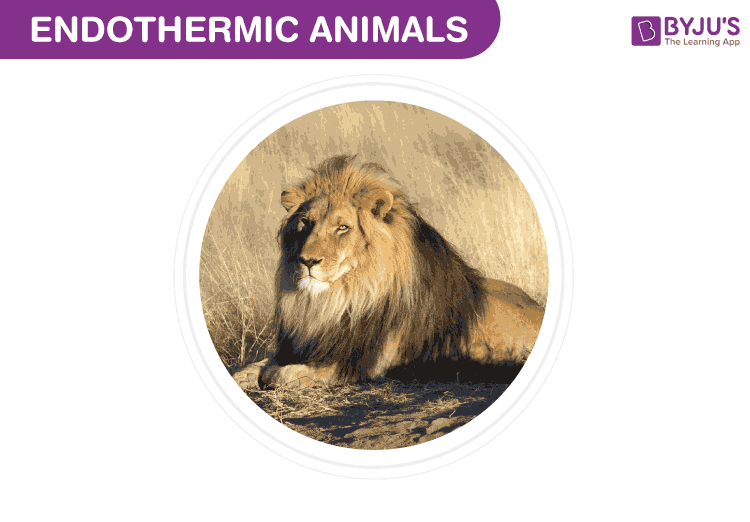An endotherm, as the name suggests, is used to refer to warm-blooded animals. They are the animals who maintain a constant body temperature irrespective of the ambient temperature. Primarily, endothermic animals constitute birds and mammals of the animal kingdom. However, some fish also are endothermic.

Pictured: Lion, a warm-blooded animal of the Felidae family
Endotherms: Warm-blooded Animals
If there is a fluctuation, i.e., if the heat generated is lesser than the heat loss, metabolic rate rises to make up for this loss. Shivering is another mechanism that humans and most other warm-blooded animals use to raise their body temperature.
But in case the heat loss is lesser than the heat generated, panting or perspiration mechanism takes place to increase the heat loss. This is the reason why humans sweat when we feel hot. Endotherms can survive and stay active at lower environmental temperatures, unlike ectotherms.
However, they need food in comparatively more quantities to maintain a constant temperature. Hence, they require more fats and sugars to produce heat in order to survive in cooler temperatures. Heat generated originates from internal organs in endothermic animals. For instance, nearly two-thirds of heat is generated in the thorax region in humans, and about sixteen per cent is generated by the brain.
With temperature, the rate of chemical reactions fluctuates, because the temperature is influenced by the rate of collisions between molecules and since the reactions may be controlled by temperature-sensitive enzymes. Reactions tend to pick up speed at higher temperatures up to a point, after which the rate drops distinctly due to the denaturation of enzymes. Every entity has its own set of enzymes that are effective for a particular range of temperature and metabolic reactions.
Entities ensure the proper functioning of these metabolic reactions by maintaining the range of temperature.
Are all Mammals Warm-blooded Animals?
From a scientific perspective, the thermoregulation of animals is not very clear-cut. For instance, bats are mammals and all mammals are warm-blooded. However, since the surface area of these animals is quite small, they need a very high-energy expenditure just to maintain their temperature.
Hence, these animals let their temperature drop slightly below the “normal” operating temperatures. However, they don’t let their temperatures drop as low as the cold-blooded animals, where it falls to the temperature of the ambient environment.
See Also:
| Thermoregulation |
| Difference Between Cold Blooded And Warm-Blooded Animals |
| Mammalia – Diversity In Living Organisms |
| Enzymes: Action and Factors affecting |
Frequently Asked Questions
What are endothermic animals?
Endothermic animals are animals that are able to maintain a constant body temperature regardless of their ambient temperature. Endothermic animals include all birds and mammals of the animal kingdom. Even some fish are considered to be endothermic.
What is the difference between endotherms and ectotherms?
Endotherms are warm-blooded animals and ectotherms are cold-blooded animals. The major difference between the two is that endotherms are able to generate and maintain constant body temperature.
What is the main source of body heat in Endotherms?
Endotherms including humans create body heat through metabolism. At the cellular level, mitochondria are responsible for the process of metabolism by creating ATP – the energy currency of the cell.
Are all warm-blooded animals mammals?
Technically, all mammals are Endotherms, but due to many reasons (size being the primary one), they exhibit features which are not typically associated with endotherms. But they clearly cannot be categorized as ectotherms because they do not let their body temperature fluctuate with the ambient temperature.
What are the characteristics of warm-blooded animals?
- Can maintain a constant body temperature irrespective of the ambient environmental temperature
- Endotherms have a higher basal metabolic rate than ectotherms
- Exhibits well-developed thermal insulation (such as fur, tuft, fat, feathers, hair etc.)
- Endotherms sweat to lose excess body heat (perspiration)
Explore more about endothermic animals and related topics by registering at BYJU’S Biology.

Comments